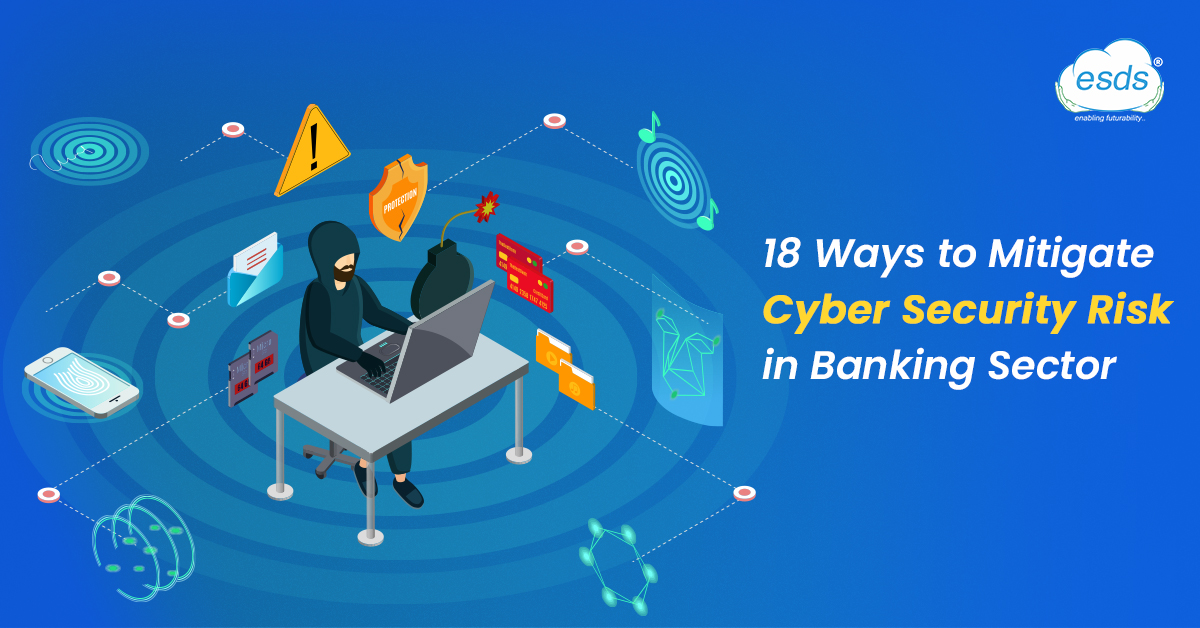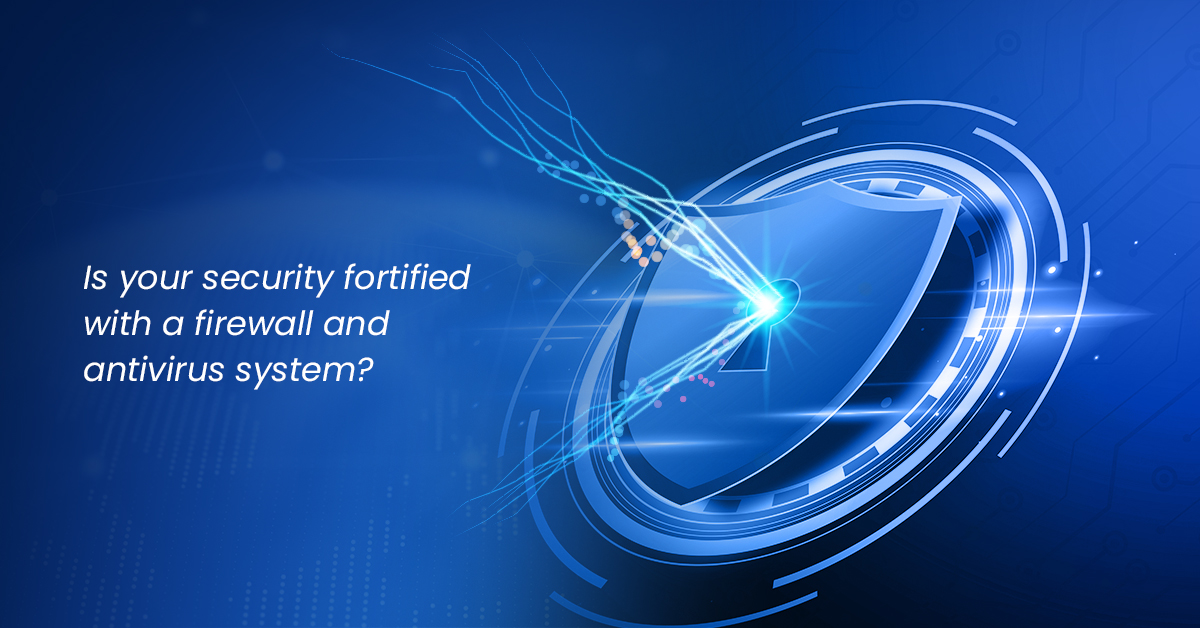18 Ways to Mitigate Cyber Security Risk in Banking Sector

The number of cyber security breaches has been increasing; by 2023, 15.4 million are predicted to have occurred. Although modern technology has made it simple for businesses to update their IT security procedures, hostile hackers are increasingly using sophisticated technologies. This indicates that you must adopt proactive measures and strict cyber security rules to lower your cyber security risks.
As a company, you must rely on something other than chance to protect your data. The financial impact might be enormous, leading to missed sales, system downtime, and consumer data theft. Additionally, data breaches harm your reputation, which could sometimes force you out of business. How, therefore, can you lower cyber security risk for your organization, given everything at stake?
Here are the 18 best Ways to Mitigate Cyber Security Risk in Banking Sector
- Risk Recognition
- Privacy Protection
- Managing the Vulnerabilities
- Secure Information Sharing
- Mitigate Identity Theft and Fraud
- Restrict Access to Critical Information
- Firewall and Antivirus System
- Use of Software
- Application Control
- Endpoint Security
- Backup Facility
- Firewall and Intrusion Detection System
- Staff and Customer Education
- Implementation of Cyber Security Policy
- Continuous monitoring of the systems
- Secure all Data with Encryption
- Use Multi-factor Authentication
- Scan Networks Regularly
1. Risk Recognition
Organizations can proactively identify and assess threats to their systems and data by recognizing potential risks. This allows them to implement appropriate IT security measures and controls to mitigate the risks effectively. Early risk recognition helps reduce the likelihood of IT security breaches and minimize the impact of any incidents.
2. Privacy Protection
Privacy protection ensures that individuals’ personal information is safeguarded and used appropriately. By implementing privacy protection measures, organizations demonstrate their commitment to respecting the privacy rights of their customers and employees. This helps build trust, maintain a positive reputation, and avoid legal and financial consequences of privacy breaches.
3. Managing the Vulnerabilities

Vulnerability management involves identifying and addressing system, network, and application weaknesses. By actively managing vulnerabilities, organizations can avoid potential threats and minimize the risk of exploitation by malicious actors. Effective vulnerability management reduces the possibility of successful attacks and enhances overall system security.
4. Secure Information Sharing
Secure information sharing ensures that data is transmitted and received securely between authorized parties. Organizations can protect sensitive information from unauthorized access, interception, or modification by implementing secure protocols and encryption techniques. Secure information sharing promotes collaboration and trust while preventing data breaches and leaks.
5. Mitigate Identity Theft and Fraud
Effective cyber security measures help mitigate the risks of identity theft and fraud. Organizations can prevent unauthorized individuals from accessing sensitive information or impersonating legitimate users by implementing robust authentication mechanisms and monitoring systems for suspicious activities. This safeguards the integrity of user accounts and prevents financial losses associated with identity-related crimes.
6. Restrict Access to Critical Information
Restricting access to critical information ensures that only authorized individuals can access sensitive data. Organizations can prevent unauthorized users from viewing, modifying, or deleting critical information by implementing proper access controls and user privileges. This minimizes the risk of insider threats and accidental data breaches.
7. Firewall and Antivirus System

Firewalls and antivirus systems are essential IT security measures that protect networks and systems from unauthorized access and malware. Firewalls monitor and control incoming and outgoing network traffic, while antivirus software detects and removes malicious software. By using these tools, organizations can prevent unauthorized access and protect against various types of malware, enhancing overall system IT security.
8. Use of Software
Using reliable and regularly updated software is crucial for maintaining a secure computing environment. Software updates often include security patches that address known vulnerabilities and protect against emerging threats. By utilizing up-to-date software, organizations can reduce the risk of exploitation by attackers who target outdated or unpatched software.
9. Application Control
Implementing application control involves managing and controlling the applications running on systems and networks. This helps prevent the execution of unauthorized or malicious software, reducing the risk of malware infections and unauthorized access. Application control enhances system stability, performance, and security.
10. Endpoint Security
Endpoint security focuses on securing individual devices, such as computers, laptops, smartphones, and tablets, that connect to a network. By implementing endpoint security measures like antivirus software, encryption, and device management, organizations can protect against malware, data loss, and unauthorized access. Endpoint security ensures that devices accessing the network are secure and compliant with organizational policies.
11. Backup Facility
Regularly backing up data is essential for disaster recovery and business continuity. With backup facilities, organizations can quickly restore their systems and data in case of accidental deletion, hardware failure, or ransomware attacks. Backups help minimize downtime, prevent data loss, and enable faster recovery, ensuring business operations can resume promptly.
12. Intrusion Detection System
Intrusion detection systems (IDS) monitor network traffic and identify potential security breaches or unauthorized activities. By analyzing network packets and system logs, IDS can detect suspicious patterns or behaviors indicative of an ongoing attack. The benefit of IDS is that it enables organizations to detect and respond to security incidents promptly, minimizing potential damage and reducing the time, it takes to mitigate the impact.
13. Staff and Customer Education
Educating staff and customers about cyber security best practices is crucial for building a strong security culture and reducing the risk of human error. Organizations can enhance their employees’ and customers’ understanding of potential threats, phishing scams, social engineering techniques, and safe online practices by providing training and awareness programs. Well-informed individuals are more likely to recognize and report security incidents, strengthening security posture.
14. Implementation of Cyber security Policy

A comprehensive cyber security policy is a guiding framework for organizations to establish and enforce security measures consistently. By implementing a cyber security policy, organizations can ensure that security practices are aligned with industry standards, regulatory requirements, and the organization’s specific needs. A well-defined policy clarifies roles and responsibilities, incident response procedures, and acceptable use of resources, contributing to a proactive and systematic approach to security.
15. Continuous Monitoring of the Systems
Continuous monitoring involves real-time monitoring and analysis of network activities, system logs, and security events. Organizations can promptly detect and respond to security incidents by continuously monitoring systems, including unauthorized access attempts, malware infections, or suspicious behavior. Continuous monitoring helps identify and mitigate threats before they can cause significant damage or lead to data breaches.
16. Secure all Data with Encryption
Encryption protects sensitive data at rest and in transit. By encrypting data, organizations can render it unreadable and unusable to unauthorized individuals. Even if data is intercepted or stolen, encryption ensures it remains secure and confidential. Encryption provides an extra layer of protection and helps organizations comply with data protection regulations.
17. Use Multi-factor Authentication:
Multi-factor authentication (MFA) adds an extra layer of security beyond traditional username and password combinations. Organizations can significantly reduce the risk of unauthorized access by requiring users to provide additional authentication factors such as biometrics, tokens, or one-time passwords. MFA strengthens authentication processes and makes it harder for attackers to compromise user accounts.
18. Scan Networks Regularly
Regular network scanning involves actively scanning networks for vulnerabilities, misconfigurations, or potential security weaknesses. Organizations can identify and address vulnerabilities by conducting routine scans before attackers exploit them. Network scanning helps maintain a secure network infrastructure and prevents unauthorized access or data breaches.
In conclusion, the banking sector is a prime target for cybercriminals, and mitigating cyber security risks has become a critical priority. ESDS, with its comprehensive and customized solutions, advanced technologies, and unwavering commitment to security, stands out as the ideal partner for banks seeking to fortify their defenses. By choosing ESDS, banks can focus on their core operations and deliver exceptional customer services, knowing that their critical systems and data are in safe hands.
ESDS’ comprehensive approach to cyber security encompasses cutting-edge technologies, robust infrastructure, and a proactive stance towards emerging threats. By leveraging advanced tools and techniques, ESDS ensures that banks can safeguard their systems, networks, and customer information from unauthorized access, data breaches, and cyber-attacks. One of the key strengths of ESDS lies in its ability to develop tailor-made solutions that address the specific needs of banks. They work closely with their clients, conducting thorough risk assessments and audits to identify vulnerabilities and devise effective strategies for protection.
- Decoding Generative AI: A Comprehensive Guide to Gartner’s Impact Radar - January 2, 2024
- 5 Best Practices for Cloud Security in 2024 - December 29, 2023
- 10 Best Machine Learning Ops Strategies for Cloud Environments in 2024 - December 29, 2023
